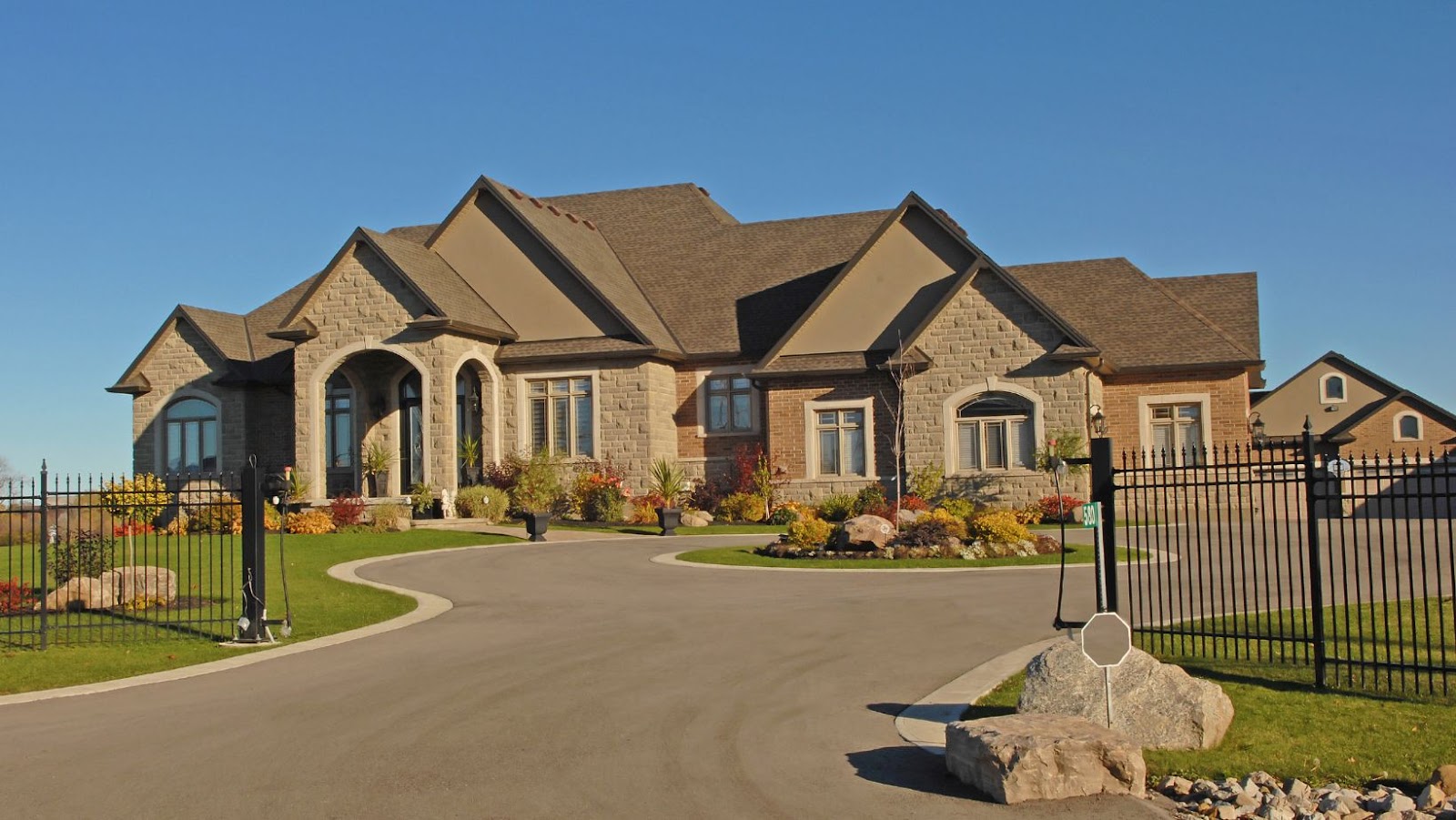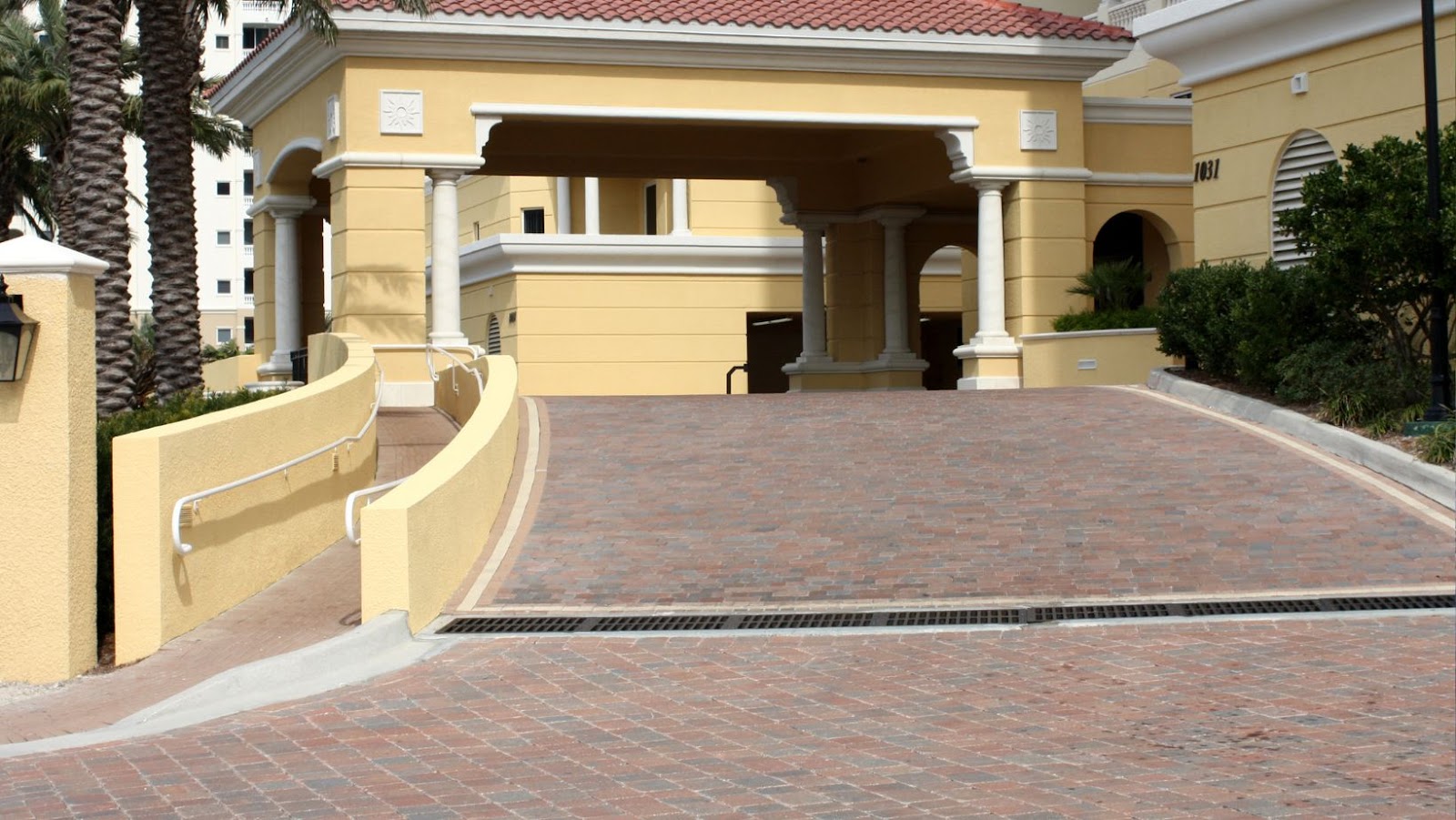

Driveway maintenance is an important part of keeping your home and its surroundings looking neat, tidy and presentable. It is also important for keeping the driveway serviceable and free from damage. In this article, we will look at what driveway maintenance entails, what materials are available and the best ways to keep your driveway in good condition.
What is a Driveway
A driveway is a flat, hard surface that connects a home or other building to the road. It provides a safe and convenient way for vehicles, people and goods to travel from the parking area to the main thoroughfare. Driveways are typically constructed of concrete or asphalt, and may be lined with interlocking pavers or decorative stones.
Regular maintenance helps keep driveways in peak condition. Commonly overlooked components include patching cracks and holes, filling joint gaps between pavement sections, resealing surfaces to renew the finish, pressure-washing surfaces for aesthetics, grading for drainage purposes, controlling weeds around perimeters and adding aggregate materials like stones for stability.
For extreme cases of damage or wear-and-tear, professional resurfacing may be necessary. This involves stripping off old pavement layers before installing new material in its place. Resurfacing requires specialized planning and skill; ensuring compatibility among existing supporting infrastructure such as curbs and base layers is essential to long-term functionality.
Driveway maintenance is an important part of keeping homes looking nice and allowing vehicles free movement from carport to local avenues on a daily basis. Working with a professional expert can help keep your driveway looking great for years to come!
Benefits of Regular Driveway Maintenance
Driveway maintenance is an essential part of keeping your home in tip-top condition. Whether you have a paved, gravel or concrete driveway, regular cleaning and repair will save you money in the long run. Here are some of the key benefits that come with maintaining your driveway:
1. Improved Curb Appeal: Regular driveway maintenance will help keep your curb appeal intact. A well-maintained driveway can make a huge difference to your home’s aesthetic value and make it stand out from the rest of the neighborhood.
2. Prevention of Potholes: Regularly inspecting and repairing cracks and potholes is essential for preventing further damage or potential accidents due to tripping hazards or cracked pavement.
3. Protects Your Home’s Value: Any upkeep on your property reflects positively on its value in the long term, so regular maintenance on your driveway can help boost it significantly if ever you decide to sell up!
4. Increased Safety: Unrepaired outdoor surfaces such as driveways can be dangerous as they easily become tripping hazards or can cause tire marks if not maintained properly! Regular care and ongoing repairs are essential for safety purposes, as well as providing peace of mind for all family members and visitors alike.
5. Lasts Longer & Looks Better: Regular cleaning, inspections and repairs can help prolong the life of the material and keep it looking nicer for longer, increasing resale value further down the line should you need it!

Preparing for Maintenance
Driveway maintenance is an essential part of taking care of your driveway. Preparing your driveway for maintenance is key to ensuring that your driveway will last for years to come. In this article, we will discuss the necessary steps that need to be taken when it comes to preparing for driveway maintenance. We will cover topics such as assessing the condition of your driveway, determining the best materials for your driveway, and the importance of cleaning your driveway before beginning any maintenance.
Cleaning the Driveway
Cleaning the driveway prior to maintenance is essential for ensuring the success of the project. The driveway should be inspected for any debris, such as leaves or stones, as well as signs of damage, like cracks or erosion. It is also important to check for areas where dirt and grime have accumulated. Any of these can be removed with a pressure washer, taking special care to not miss any corners or crevices, before performing any repairs or maintenance.
Once all visible debris has been removed, an asphalt cleaner can be used to remove stains and grease from the surface of the driveway. This is an important step in preparing the material and should be done prior to any sealcoating. After using an asphalt cleaner, it is important to rinse off all of the soap residue before beginning work on sealing your driveway.
Additionally, it is advisable to use a chemical solution containing degreaser and deodorizer in order to eliminate odors caused by pet urine and feces that may have accumulated on your driveway over time. This will help reduce unpleasant smells that can come from maintenance projects and extend the life of your newly sealed driveway.
Repairing Cracks and Holes
When types of driveway maintenance that require basic repairs, these can usually be done on your own. While some driveway materials require professional assistance to fix, the most common problems such as cracks and holes can often be taken care of using a few tools and techniques.
Repairing Cracks and Holes:
The first step in any driveway repair is to make sure you have identified the correct area to repair, and have cleaned away any loose debris or dirt from around the issue. For cracks, you should use either a concrete or asphalt filler to fill in the affected area. Once it’s been filled in, you should use a patching material such as cold asphalt patch or a concrete patch to seal the repaired area and keep moisture out. For large holes, some fill material is needed to bring it up to even level with the rest of the surface – this could range from small gravel up to larger rocks depending on how deep your hole is. After filling in these material types should be tamped down before sealing with either an asphalt emulsion or concrete sealant.
Sealing the Driveway
Sealing your driveway is an important part of keeping it looking good as well as protecting it from the elements and any other damage that could occur. Before sealing, it is important to make sure your driveway is clean, free from weeds growing through cracks, and free from any dirt or other debris. Fill in any cracks before applying sealant for a smooth finish.
One of the most important steps for sealing your driveway is to choose the right sealant. Make sure you find a sealant that works with the type of driveway you have (asphalt or concrete) as well as its condition. Depending on the wear and tear over time, you may need to use a different type of sealant than originally installed with the driveway. If you are unsure what material is best for your particular situation, reach out to an expert who specializes in driveway maintenance and repair for tailored advice specific to your project.
When ready to apply sealant make sure all necessary prep work has been made: cleaning, filling of any cracks, use of power washers if needed; then start by laying a bead along each side edge and across joints with a caulking gun then use a squeegee for larger areas for even coverage and finally allow proper drying times according to manufacturer’s instructions before use.
By completing regular maintenance such as sealing on asphalt driveways every two years or so, you can help keep them looking good while protecting them from wear-and-tear caused by colder weather or heavy vehicle traffic. Taking care of your driveway can also increase its longevity and make it look newer longer while avoiding costly repairs due to water damage down the road.
Preventative Maintenance
Driveway maintenance is essential for keeping your outdoor property in top condition. Regular preventative maintenance can help avoid costly repairs that can arise from driveway damage. In this article, we will discuss prevention techniques to keep your driveway in optimal condition and help you save money.
Applying a Protective Coating
When considering driveway maintenance it is important to apply a protective coating to help prolong the life of the surface and deter future damage. An asphalt sealer can provide protection to asphalt driveways, while a concrete sealer will protect cement driveways. Each offers protection from elements such as sunlight, water damage and oil stains. As part of preventative driveway maintenance, applying a sealant helps reduce soil erosion by way of water running off, in turn helping minimize fissures so any future repairs are inaccessible.
It is also beneficial to clean your driveway on a regular basis. The various cleaning tools and materials used on a regular basis all play an important role in maintaining the look and feel of your driveway for years to come. Cleaning the surface with mild bleach or soap can remove dirt and other debris from the surface more quickly than just pressure washing alone. A quality pressure washer should be used for optimal results; however, paying special attention not to use too much pressure when washing as this may cause further damage or permanent marks.
Inspecting the Driveway Regularly
Regularly inspecting your driveway is one of the most important preventative maintenance activities you can do. This process involves assessing the drive for any noticeable signs of wear and tear, as well as any potential safety issues.
Take a careful look at your driveway over time to ensure that it does not become cracked or pot holed. Such imperfections may increase water infiltration and weaken the structure of the surface, leading to further deterioration of the structure over time. Additionally, examine key areas such as gateways or points where heavy loads are most likely to gather on your driveway surface. It’s also important to make sure there are no recurring puddles or standing pools which may indicate drainage issues.
Additionally, check for any vegetation which may have grown through broken paving stones or around the edges of driveways; these should be fully removed as soon as possible in order to avoid further damage developing over time. Finally, it is important that cracks and visible signs of wear and tear should be sealed immediately upon detection in order to minimize long term damage.

Resealing the Driveway Every Few Years
An effective way to protect your driveway is to reseal it every few years. Doing so will help protect the overall surface of your driveway by providing a waterproof layer and a barrier against potential cracks and damages caused by extreme temperature changes, while also preventing weed growth.
If you wish to go the extra mile and provide extra protection for your driveway, you should first use a power washer or a stiff-bristled brush and detergent soap to clean down the surface of the driveway. Treat any stubborn stains with chemical strength cleaners before rinsing thoroughly with water. This will help prepare the surface for the sealer that will be applied later on.
Once you are done cleaning, consider filling in any major cracks or holes before applying sealer with a layer of asphalt patch or crack filler material, which may have come together in some packages with the sealer at purchase time. If there are minor cracks that don’t merit filling, brushing them over with an approved oil primer can help better bind whatever debris lay within them in case they expand later on from temperature changes.
Choosing an appropriate sealer is definitely important when targeting optimal security for your driveways — options range from coal tar emulsion materials to pure acrylic latex fillers; hence you should consult consumer reports online and read product analysis carefully if opting to go without professional assistance on this task as each option is likely to be affected differently under excessive wear conditions over time and one may afford better coverage than another depending on climate conditions in your geographic area at large. Once you finish applying whichever kind of sealer best fits your needs, make sure it has exceptionally dried out — sometimes taking up to 3 days — in order for it to secure its place tightly around asphalt surfaces and remain unaffected throughout near future use.
Conclusion
Overall, driveway maintenance is an important aspect of keeping your driveway in good condition. It can increase the lifespan of your pavement, reduce the chances of costly repairs, and improve the overall aesthetic of your property. Remember to inspect your driveway regularly, patch any signs of fatigue or damage, and seal your driveway every few years. Regular maintenance can help you avoid costly repairs in the future.
Summary of Benefits
Maintaining your driveway properly is important to preserving its life and worth. Not only is a well-kept driveway aesthetically pleasing but also it increases the safety and curb appeal of your home. Regular maintenance should include clearing away debris, inspection for damage, sealing cracks to prevent further damage, and resealing the entire surface every one to three years, depending on the material. With proper care and attention to treating anyblems as soon as they appear, you can extend the lifespan of your driveway and keep it looking attractive for years to come. Additionally, you may consider adding a layer of asphalt sealant when you first lay down surfacing to provide extra protection against wear from automobiles and weather.

Tips for Maintaining Your Driveway
Maintaining your driveway should be a priority for any homeowner or business owner. As the first impression for visitors, it needs to look its best. Regular cleaning and maintenance will help ensure that your driveway continues to look its best and last for years. Here are some general tips to keep in mind when maintaining your driveway:
Clean Regularly: Sweep away dirt and debris on a regular basis with a broom or blower nozzle. This will help to keep surfaces looking their best and reduce the chance of pitting or cracking caused by grit that gets trapped between stones and bricks.
Treat Stains Quickly: Spill grease, oil, or other liquids quickly with a detergent designed specifically for those types of stains. Do not use power washers as they can damage pavers, bricks, stone coatings, sealers, etc.
Reseal Regularly: Reseal your driveway every few years depending on the material used (brick/stone pavers may need resealing more often than asphalt). Keeping a sealant layer over the top helps preserve color and structure over time as well as make it easier to clean off any spills in the future.
Check for Structural Issues: Look out for cracks and raises in the surface of your drive-way annually so that you can address them quickly before they become bigger problems. Small cracks can be filled with caulk while larger ones may require professional attention from an asphalt repair contractor to prevent further damage from occurring.
Replace Loose Stones: If you notice loos stones in your drive-way’s surface make sure to replace them with ones from an appropriate local store or online supplier so that they match the aesthetics of their surroundings. This prevents anomalous wear patterns throughout it due to differently sized pieces of pavement being present at different places along its route.





